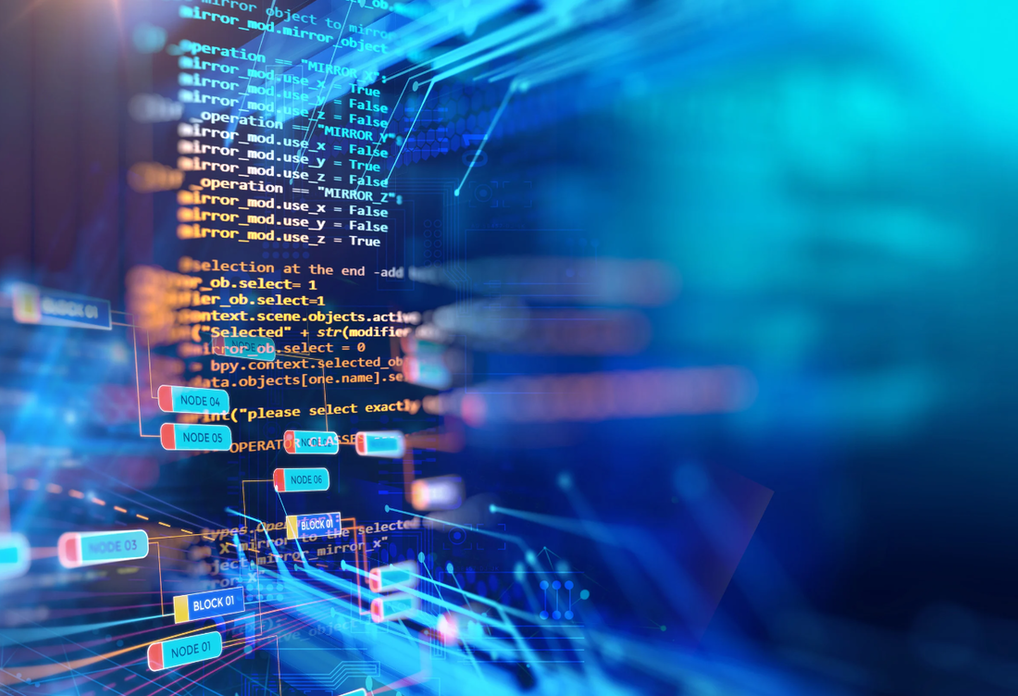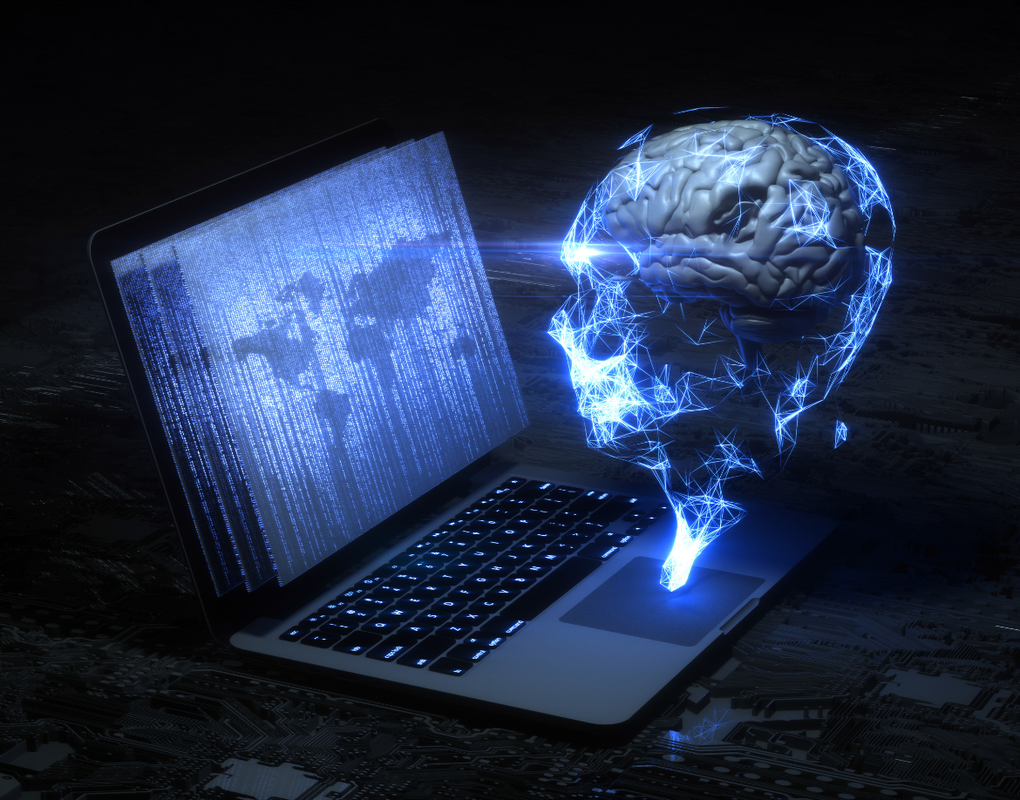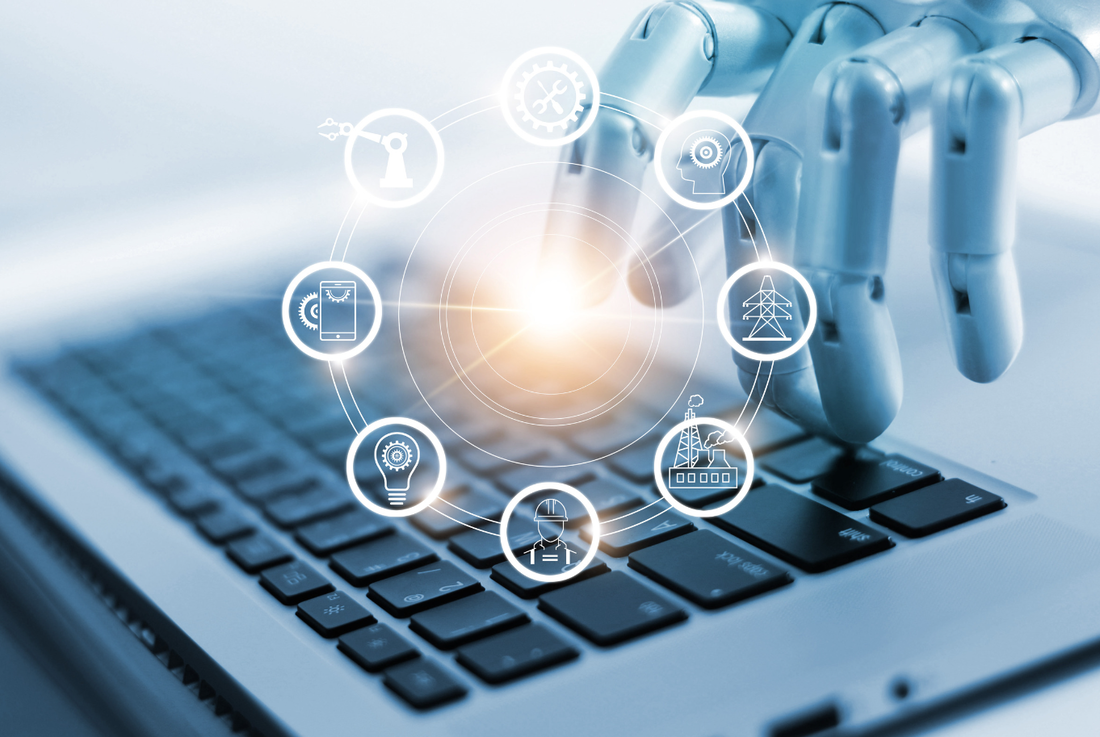"The Scientist's Guide to a Career in Artificial Intelligence"
STEM is a common abbreviation for four closely connected areas of study: science, technology, engineering and mathematics.
STEM is an interdisciplinary approach that encompasses four critical academic disciplines: science, technology, engineering, and mathematics. Instead of teaching these subjects separately, STEM integrates them into a cohesive learning paradigm that is based on real-world applications.
Science: The study of the natural world and phenomena, encompassing disciplines like biology, chemistry, physics, and earth sciences. It forms the foundation for understanding the world we live in.
Importance of STEM: STEM education is seen as crucial for the future due to the rapid pace of innovation and the increasing demand for STEM-related jobs in the global economy. STEM skills are essential for addressing the world's most pressing challenges, from healthcare to sustainable energy solutions. Promoting STEM education also helps foster critical thinking, creativity, and problem-solving skills.
STEM in Education: Many educational institutions globally are increasingly focusing on STEM to prepare students for the challenges and opportunities of the 21st century. This includes hands-on learning, project-based challenges, and real-world problem-solving to make learning relevant and engaging for students.
In conclusion, STEM isn't just about four separate disciplines; it's about preparing the next generation with the integrated knowledge and skills they need to thrive in a technologically advanced and interconnected world.
STEM is an interdisciplinary approach that encompasses four critical academic disciplines: science, technology, engineering, and mathematics. Instead of teaching these subjects separately, STEM integrates them into a cohesive learning paradigm that is based on real-world applications.
Science: The study of the natural world and phenomena, encompassing disciplines like biology, chemistry, physics, and earth sciences. It forms the foundation for understanding the world we live in.
- Technology: Refers to the use and knowledge of tools, techniques, and systems to solve problems and achieve goals. It encompasses a wide range of areas, from computer science to digital information technologies.
- Engineering: The application of scientific and mathematical principles to design and build systems, structures, machines, and more. It's about solving real-world problems using technical and practical knowledge.
- Mathematics: The study of numbers, quantities, shapes, and patterns. Mathematics provides the foundation for all STEM fields, offering tools and methodologies for analysis and problem-solving.
Importance of STEM: STEM education is seen as crucial for the future due to the rapid pace of innovation and the increasing demand for STEM-related jobs in the global economy. STEM skills are essential for addressing the world's most pressing challenges, from healthcare to sustainable energy solutions. Promoting STEM education also helps foster critical thinking, creativity, and problem-solving skills.
STEM in Education: Many educational institutions globally are increasingly focusing on STEM to prepare students for the challenges and opportunities of the 21st century. This includes hands-on learning, project-based challenges, and real-world problem-solving to make learning relevant and engaging for students.
In conclusion, STEM isn't just about four separate disciplines; it's about preparing the next generation with the integrated knowledge and skills they need to thrive in a technologically advanced and interconnected world.
The Future of Science Major : AI Artificial Intelligence

Interdisciplinary Nature: AI is inherently interdisciplinary, drawing from computer science, mathematics, statistics, neuroscience, and various scientific domains. Science majors, especially those with strong analytical and quantitative skills, can find valuable applications for their knowledge in AI research and development.
RESEARCH OPPORTUNITY
INDUSTRY DEMAND
The landscape of AI and the job market may have changed since my last update. Therefore, I recommend that college students interested in AI regularly consult with academic advisors, industry professionals, and AI experts to gain insights into the latest trends and opportunities in this dynamic field. Also, consider joining AI-related clubs, participating in internships, and working on AI projects to gain hands-on experience and build a strong portfolio. "The AI Renaissance: Opportunities for Science Majors" This title suggests a resurgence or revival of interest in AI and highlights the various career opportunities available to college students majoring in science disciplines.
- Specialized Roles: Depending on their scientific background, students can specialize in various AI subfields such as natural language processing (NLP), computer vision, robotics, machine learning, and data science. For example, a biology major might work on applying AI to analyze biological data or assist in drug discovery.
RESEARCH OPPORTUNITY
- Research Opportunities: AI offers numerous research opportunities in scientific domains. Scientists increasingly use AI techniques to analyze complex datasets, simulate experiments, optimize processes, and make predictions. Science majors can contribute to these research efforts by bridging the gap between traditional scientific knowledge and AI techniques.
INDUSTRY DEMAND
- Industry Demand: The demand for AI professionals across industries continues to grow. Companies seek individuals with AI expertise to develop innovative solutions, improve efficiency, and gain competitive advantages. Science majors who acquire AI skills can find healthcare, finance, manufacturing, and more opportunities.
- Ethical Considerations: AI raises important ethical and societal issues. Science majors with a background in ethics or philosophy can contribute to the discussions surrounding AI's responsible and ethical use.
- Continuous Learning: AI is a rapidly evolving field. Science majors interested in AI should be prepared for constant learning and staying up-to-date with the latest advancements, programming languages, and tools in the AI ecosystem.
- Advanced Degrees: Advanced degrees (such as a Master's or Ph.D.) in AI-related fields can open up more specialized and research-oriented career paths. Many universities offer graduate programs specifically tailored to AI and machine learning.
The landscape of AI and the job market may have changed since my last update. Therefore, I recommend that college students interested in AI regularly consult with academic advisors, industry professionals, and AI experts to gain insights into the latest trends and opportunities in this dynamic field. Also, consider joining AI-related clubs, participating in internships, and working on AI projects to gain hands-on experience and build a strong portfolio. "The AI Renaissance: Opportunities for Science Majors" This title suggests a resurgence or revival of interest in AI and highlights the various career opportunities available to college students majoring in science disciplines.
- "Bridging Science and AI: A Path to Innovation" indicates the need to connect the worlds of science and artificial intelligence, emphasizing how this union can lead to innovative solutions and advancements.
- "AI's New Frontier: How Science Majors Are Shaping the Future." This title positions AI as an unexplored frontier, with science majors playing a pivotal role in shaping its trajectory and influencing the future of technology.
- "From Lab to Algorithm: Science Majors Thriving in the AI Era" suggests transitioning from traditional laboratory-based scientific work to thriving in the era of algorithms, where science graduates excel in AI-related roles.
- "Unlocking the Power of AI: Science Graduates Leading the Way." This title conveys that science graduates are at the forefront of harnessing AI's potential and leading the charge in its development and application across industries.
Wall Street Journal - Five Best Books to Read to Get Smart About AI

It’s the hot topic that everyone is talking about. Here’s where to start to find out what it’s all about.By
Daniel Akst
Sept. 8, 2023 11:00 am ET
Content Courtesy : Stanford University
These are some of the books that scientists and authors recommend for those who want to know more about AI. PHOTO ILLUSTRATION: JOHNNY SIMON/WSJ, IMAGES: (CLOCKWISE FROM TOP RIGHT) BASIC BOOKS, YALE UNIVERSITY PRESS, PENGUIN RANDOM HOUSE, W. H. FREEMAN, LITTLE, BROWN AND COMPANY, ISTOCKPHOTO/GETTY IMAGESThe recent eruption of artificial intelligence through online tools such as ChatGPT has prompted a frenzy of speculation about its future and ours. It’s still early days, yet AI is already writing coherent articles, answering complex questions—and getting better all the time at performing those and other tasks.
https://www.wsj.com/tech/ai/five-best-books-ai-24428966
Content Courtesy : WSJ.com
Stanford University
AI Book Recs: Add These to Your Reading List
Content Courtesy : Stanford University
https://hai.stanford.edu/news/ai-book-recs-add-these-your-reading-list
Education
Our HAI community offered up the best books in AI that they’re reading.
Aug 3, 2022
Shana Lynch
https://twitter.com/StanfordHAI?ref_src=twsrc%5Egoogle%7Ctwcamp%5Eserp%7Ctwgr%5Eauthorhttps://www.facebook.com/StanfordHAI/https://www.youtube.com/channel/UChugFTK0KyrES9terTid8vAhttps://www.linkedin.com/company/stanfordhaihttps://www.instagram.com/stanfordhai/?hl=en
This summer we asked our HAI community across social media channels what books on artificial intelligence they’d recommend. Here are some books to nab the next time you visit your local bookseller, from general interest to deep dives for practitioners and a few from the fiction aisles.
General AIViral Justice, by Ruha Benjamin
Benjamin is a groundbreaking scholar focused on race, technology, and justice. In this book, she offers a personal view of small decisions that can make a big difference in our lives and in society.
Genius Makers, by Cade Metz
Metz, who has covered the tech industry for the New York Times and Wired, weaves together the stories of AI researchers and corporate leaders racing to lead this emerging technology, highlighting the conflicts between business incentives and science and national interests and human concerns.
Human Compatible, by Stuart Russell
Computer scientist Russell says conflict between humans and AI is avoidable if we rethink how we build these machines. He suggests a new foundation that would create altruistic AI.
The Alignment Problem, by Brian Cristian
In this book, Cristian details the alignment problem (when the AI systems we train don’t do what we expect), all the terrible things that can and do go wrong, and the movement to fix them.
The Singularity is Nearer, by Ray Kurzweil
A follow-up to his 2005 book, futurist Kurzweil assesses his earlier predictions and tackles topics including radical life extension, nanobots, AI’s impact on unemployment, self-driving cars, and more.
Life 3.0: Being Human in the Age of Artificial Intelligence, by Max Tegmark
MIT’s Tegmark tackles some of the biggest questions in AI. How will it affect jobs? Will there be an AI arms race? How will it impact crime? He asks us to consider what kind of future we want as this technology grows more ubiquitous.
Artificial Intelligence: A Guide for Thinking Humans, by Melanie Mitchell
Just how intelligent are today’s systems? Computer scientist Mitchell shows readers what they can actually do versus what our imaginations think they can do, offering a useful overview of the technology, its achievements, and its problems.
Machines of Loving Grace: The Quest for Common Ground Between Humans and Robots, by John Markoff
Will machines help or replace us? New York Times reporter and former Stanford HAI fellow Markoff looks at the historical relationship between humans and machines and shows that we are on the verge of a new era of technological revolution, and we must think very carefully about how we want to integrate robots into our lives.
Cybernetic Revolutionaries: Technology and Politics in Allende’s Chile, by Eden Medina
Indiana University’s Medina writes about two failed revolutions in Chile — one a socialist regime change under Salvador Allende and one known as Project Cybersyn, an attempt to manage the economy through an intelligent computer system.
Prediction Machines, by Ajax Agrawal, Joshua Gans, and Avi Goldfarb
Three economists frame AI as prediction and show how it can be used by companies, policymakers, and investors for strategy, new business structures, and better decision-making tools.
The Second Machine Age: Work, Progress, and Prosperity in a Time of Brilliant Technologies, by Erik Brynjolfsson and Andrew McAfee
Stanford Digital Economy Lab director Brynjolfsson and MIT scientist McAfee show how digital technology has upended how we work and how we live and is rapidly changing the economy as we know it.
AI and Human IntelligenceThe Society of Mind, by Marvin Minsky
What is the mind and how does it work? In this book from 1986, MIT AI Lab co-founder Minsky offers a model of human cognition as a series of interactions with simple parts and delves into topics including language, memory, and consciousness.
Gödel, Escher, Bach: An Eternal Golden Braid, by Douglas R. Hofstadter
This Pulitzer Prize-winning book from 1979 explores mathematics, symmetry, and intelligence and discusses how systems acquire meaningful context when made of meaningless parts. “It can be difficult, but absolutely worth the effort,” says the recommender.
What Is Thought, by Eric Baum
Here scholar Baum proposes a computational explanation of thought and explores what computer scientists can learn from understanding the evolution of human intelligence.
Textbooks/PractitionersThe Political Philosophy of AI: An Introduction, Mark Coeckelbergh
While this book was recommended for our student audience, anyone can find value in this exploration of political challenges related to artificial intelligence, from discrimination and surveillance to a functioning democracy.
Grokking Deep Reinforcement Learning, by Miguel Morales
In this serious dive into deep reinforcement learning, Morales provides an overview of the approach, complete with illustrations, exercises, and real-world applications.
Pattern Recognition and Machine Learning, by Christopher M. Bishop
Bishop, the director of Microsoft Research AI4Science, details the growth of Bayesian methods in this textbook while also offering up an introduction to pattern recognition and machine learning.
Deep Learning, by Ian Goodfellow, Yoshua Bengio, and Aaron Courville
The authors explore deep learning’s mathematical background, several research perspectives from representation learning to deep generative models, and the techniques used in industry including NLP, computer vision, and optimization algorithms.
Neural Networks from Scratch, by Harrison Kinsley and Daniel Kukieła
Learn to code neurons, create layers, calculate loss, and do backpropagation, along with some general background on the structure of ML algorithms.
Reinforcement Learning: Industrial Applications of Intelligent Agents, by Phil Winder
This book for professionals explores the state of reinforcement learning, various algorithms and frameworks, and real-life industrial applications.
Trustworthy Machine Learning, by Kush Varshney
Accuracy isn’t enough when you’re training ML systems for important applications, says IBM Distinguished Researcher Varshney. Models must be fair, understandable, transparent, inclusive and can’t fall apart in different conditions.
FictionFlowers for Algernon, by Daniel Keyes.
In this novel, a man with a low IQ takes part in an experiment designed to increase his intelligence and finds himself struggling with new reflections on his relationships, his past, and who he is now. “It is one of the most enthralling books exploring the vitality of the human brain through AI,” notes our recommender.
AI 2041: Ten Visions for our Future, by Chen Qiufan and Kai-Fu Lee
AI will bring about incredible change in our lives and society, as well as incredible danger. These 10 short stories imagine the world in 2041 shaped by AI, in both terrifying and mesmerizing ways.
Stanford HAI’s mission is to advance AI research, education, policy and practice to improve the human condition. Learn more.
More News Topics Education
Content Courtesy : Stanford University
https://hai.stanford.edu/news/ai-book-recs-add-these-your-reading-list
Education
Our HAI community offered up the best books in AI that they’re reading.
Aug 3, 2022
Shana Lynch
https://twitter.com/StanfordHAI?ref_src=twsrc%5Egoogle%7Ctwcamp%5Eserp%7Ctwgr%5Eauthorhttps://www.facebook.com/StanfordHAI/https://www.youtube.com/channel/UChugFTK0KyrES9terTid8vAhttps://www.linkedin.com/company/stanfordhaihttps://www.instagram.com/stanfordhai/?hl=en
This summer we asked our HAI community across social media channels what books on artificial intelligence they’d recommend. Here are some books to nab the next time you visit your local bookseller, from general interest to deep dives for practitioners and a few from the fiction aisles.
General AIViral Justice, by Ruha Benjamin
Benjamin is a groundbreaking scholar focused on race, technology, and justice. In this book, she offers a personal view of small decisions that can make a big difference in our lives and in society.
Genius Makers, by Cade Metz
Metz, who has covered the tech industry for the New York Times and Wired, weaves together the stories of AI researchers and corporate leaders racing to lead this emerging technology, highlighting the conflicts between business incentives and science and national interests and human concerns.
Human Compatible, by Stuart Russell
Computer scientist Russell says conflict between humans and AI is avoidable if we rethink how we build these machines. He suggests a new foundation that would create altruistic AI.
The Alignment Problem, by Brian Cristian
In this book, Cristian details the alignment problem (when the AI systems we train don’t do what we expect), all the terrible things that can and do go wrong, and the movement to fix them.
The Singularity is Nearer, by Ray Kurzweil
A follow-up to his 2005 book, futurist Kurzweil assesses his earlier predictions and tackles topics including radical life extension, nanobots, AI’s impact on unemployment, self-driving cars, and more.
Life 3.0: Being Human in the Age of Artificial Intelligence, by Max Tegmark
MIT’s Tegmark tackles some of the biggest questions in AI. How will it affect jobs? Will there be an AI arms race? How will it impact crime? He asks us to consider what kind of future we want as this technology grows more ubiquitous.
Artificial Intelligence: A Guide for Thinking Humans, by Melanie Mitchell
Just how intelligent are today’s systems? Computer scientist Mitchell shows readers what they can actually do versus what our imaginations think they can do, offering a useful overview of the technology, its achievements, and its problems.
Machines of Loving Grace: The Quest for Common Ground Between Humans and Robots, by John Markoff
Will machines help or replace us? New York Times reporter and former Stanford HAI fellow Markoff looks at the historical relationship between humans and machines and shows that we are on the verge of a new era of technological revolution, and we must think very carefully about how we want to integrate robots into our lives.
Cybernetic Revolutionaries: Technology and Politics in Allende’s Chile, by Eden Medina
Indiana University’s Medina writes about two failed revolutions in Chile — one a socialist regime change under Salvador Allende and one known as Project Cybersyn, an attempt to manage the economy through an intelligent computer system.
Prediction Machines, by Ajax Agrawal, Joshua Gans, and Avi Goldfarb
Three economists frame AI as prediction and show how it can be used by companies, policymakers, and investors for strategy, new business structures, and better decision-making tools.
The Second Machine Age: Work, Progress, and Prosperity in a Time of Brilliant Technologies, by Erik Brynjolfsson and Andrew McAfee
Stanford Digital Economy Lab director Brynjolfsson and MIT scientist McAfee show how digital technology has upended how we work and how we live and is rapidly changing the economy as we know it.
AI and Human IntelligenceThe Society of Mind, by Marvin Minsky
What is the mind and how does it work? In this book from 1986, MIT AI Lab co-founder Minsky offers a model of human cognition as a series of interactions with simple parts and delves into topics including language, memory, and consciousness.
Gödel, Escher, Bach: An Eternal Golden Braid, by Douglas R. Hofstadter
This Pulitzer Prize-winning book from 1979 explores mathematics, symmetry, and intelligence and discusses how systems acquire meaningful context when made of meaningless parts. “It can be difficult, but absolutely worth the effort,” says the recommender.
What Is Thought, by Eric Baum
Here scholar Baum proposes a computational explanation of thought and explores what computer scientists can learn from understanding the evolution of human intelligence.
Textbooks/PractitionersThe Political Philosophy of AI: An Introduction, Mark Coeckelbergh
While this book was recommended for our student audience, anyone can find value in this exploration of political challenges related to artificial intelligence, from discrimination and surveillance to a functioning democracy.
Grokking Deep Reinforcement Learning, by Miguel Morales
In this serious dive into deep reinforcement learning, Morales provides an overview of the approach, complete with illustrations, exercises, and real-world applications.
Pattern Recognition and Machine Learning, by Christopher M. Bishop
Bishop, the director of Microsoft Research AI4Science, details the growth of Bayesian methods in this textbook while also offering up an introduction to pattern recognition and machine learning.
Deep Learning, by Ian Goodfellow, Yoshua Bengio, and Aaron Courville
The authors explore deep learning’s mathematical background, several research perspectives from representation learning to deep generative models, and the techniques used in industry including NLP, computer vision, and optimization algorithms.
Neural Networks from Scratch, by Harrison Kinsley and Daniel Kukieła
Learn to code neurons, create layers, calculate loss, and do backpropagation, along with some general background on the structure of ML algorithms.
Reinforcement Learning: Industrial Applications of Intelligent Agents, by Phil Winder
This book for professionals explores the state of reinforcement learning, various algorithms and frameworks, and real-life industrial applications.
Trustworthy Machine Learning, by Kush Varshney
Accuracy isn’t enough when you’re training ML systems for important applications, says IBM Distinguished Researcher Varshney. Models must be fair, understandable, transparent, inclusive and can’t fall apart in different conditions.
FictionFlowers for Algernon, by Daniel Keyes.
In this novel, a man with a low IQ takes part in an experiment designed to increase his intelligence and finds himself struggling with new reflections on his relationships, his past, and who he is now. “It is one of the most enthralling books exploring the vitality of the human brain through AI,” notes our recommender.
AI 2041: Ten Visions for our Future, by Chen Qiufan and Kai-Fu Lee
AI will bring about incredible change in our lives and society, as well as incredible danger. These 10 short stories imagine the world in 2041 shaped by AI, in both terrifying and mesmerizing ways.
Stanford HAI’s mission is to advance AI research, education, policy and practice to improve the human condition. Learn more.
More News Topics Education
Content Courtesy : Stanford University
Free Education Resources : AI, SCI, STEM Website Managed by Caitlin Kim
Free Education Resources Since 2014 Covenant House Volunteers Association









